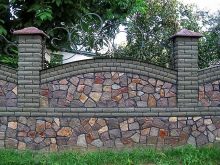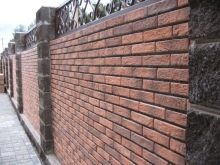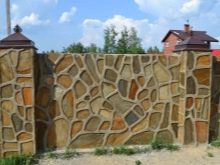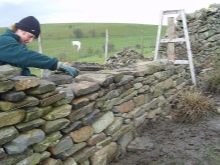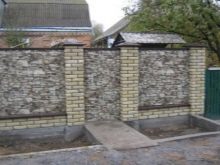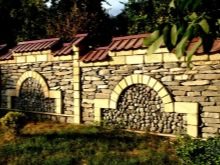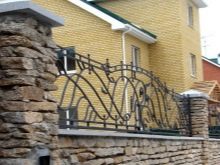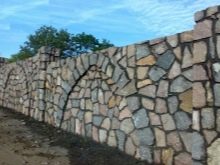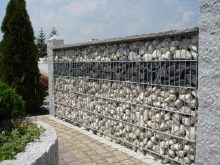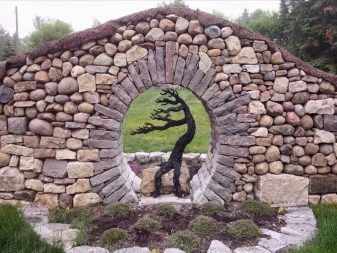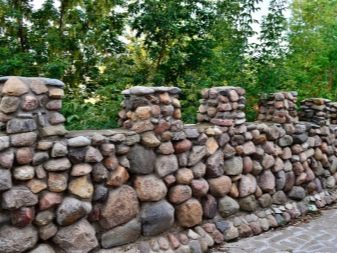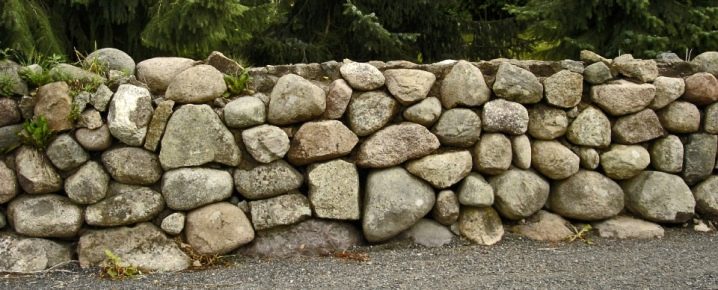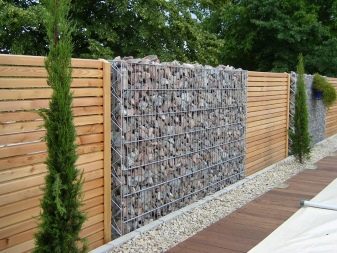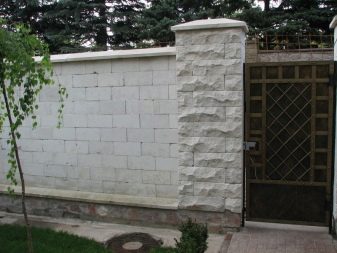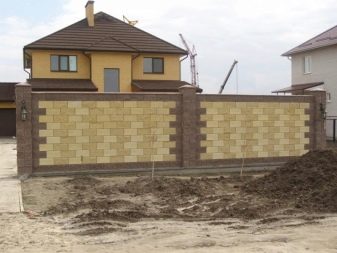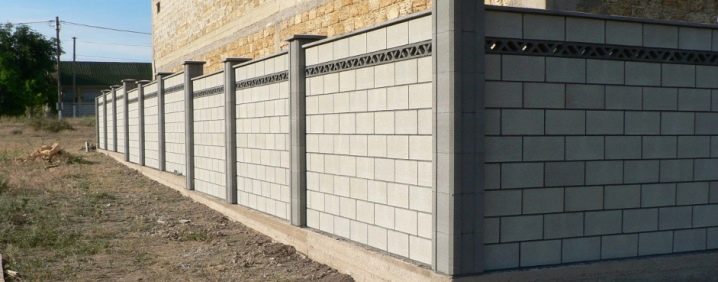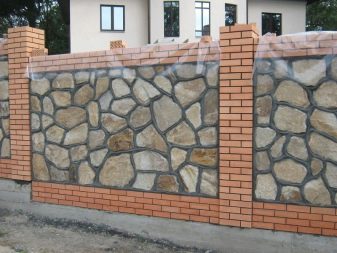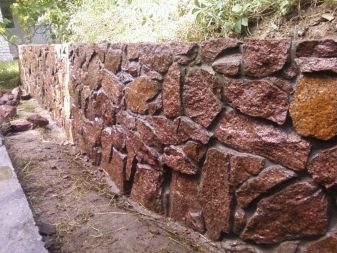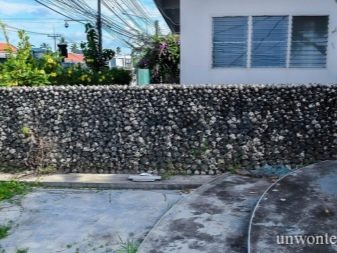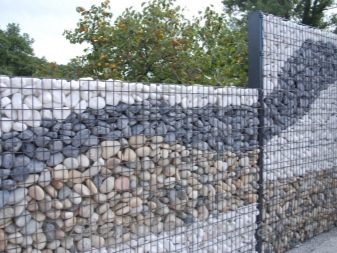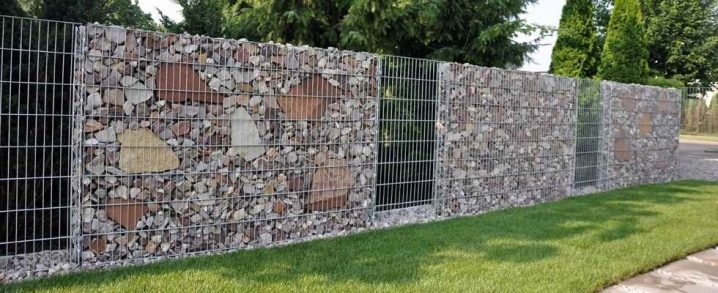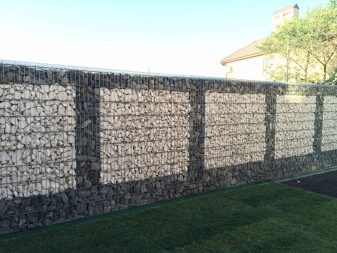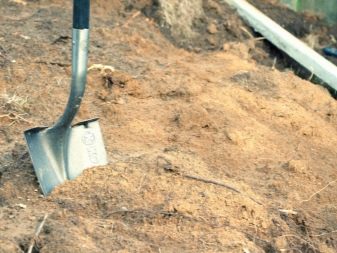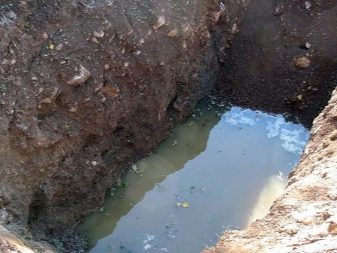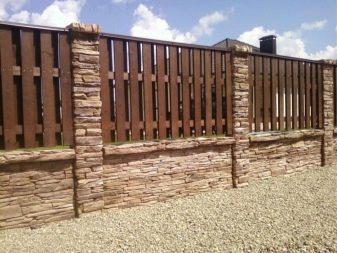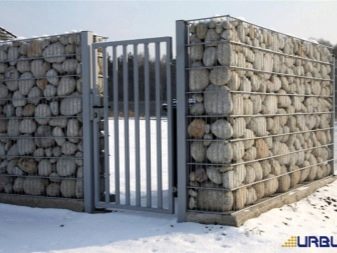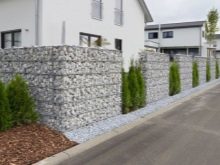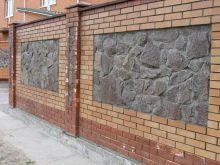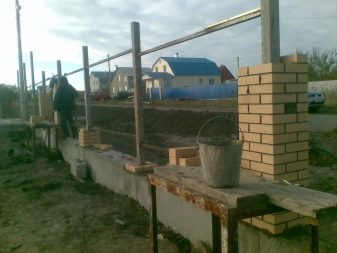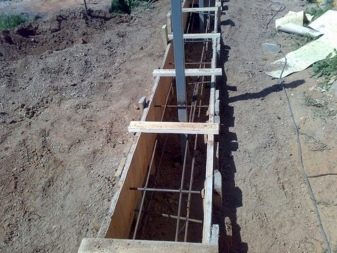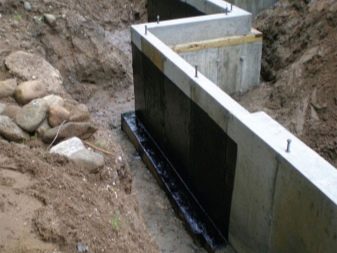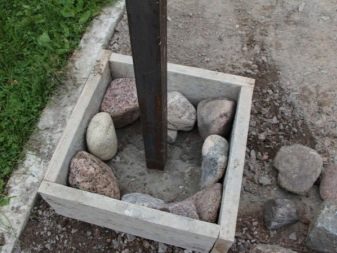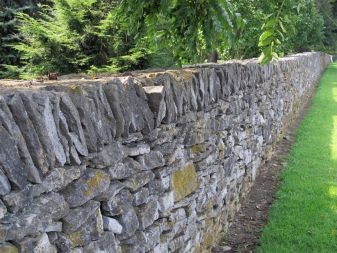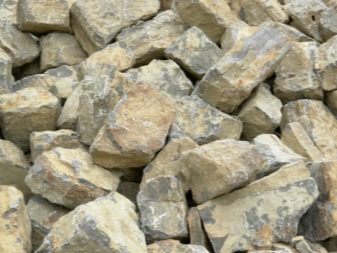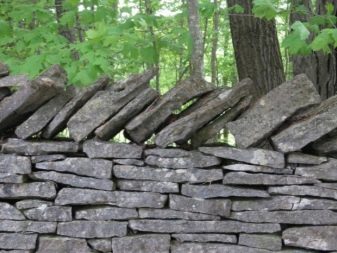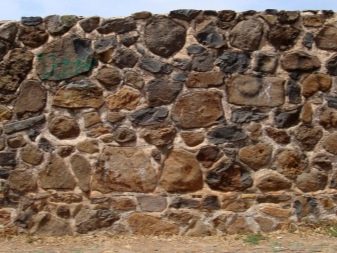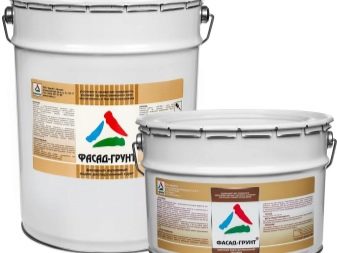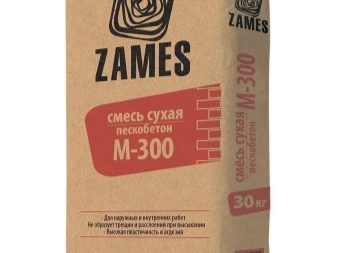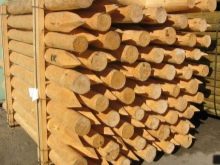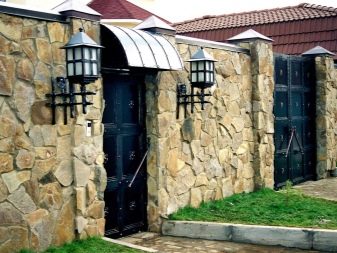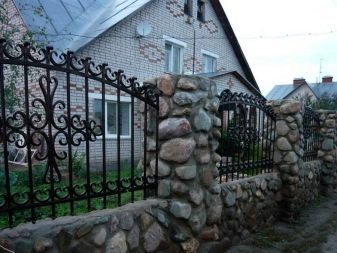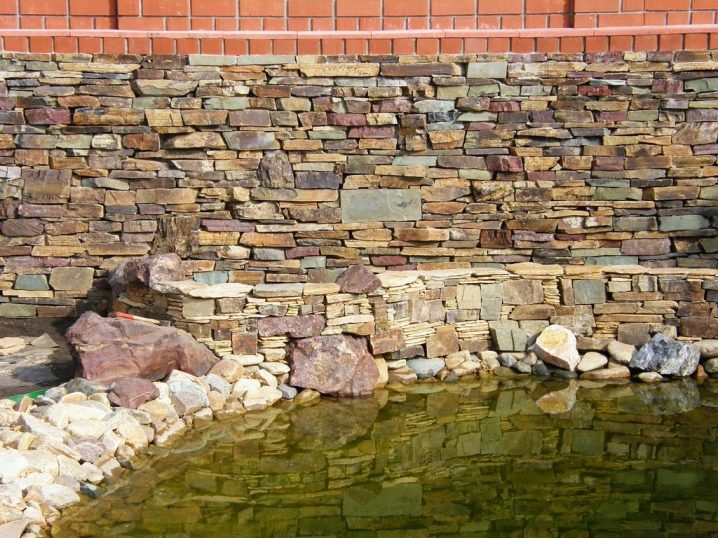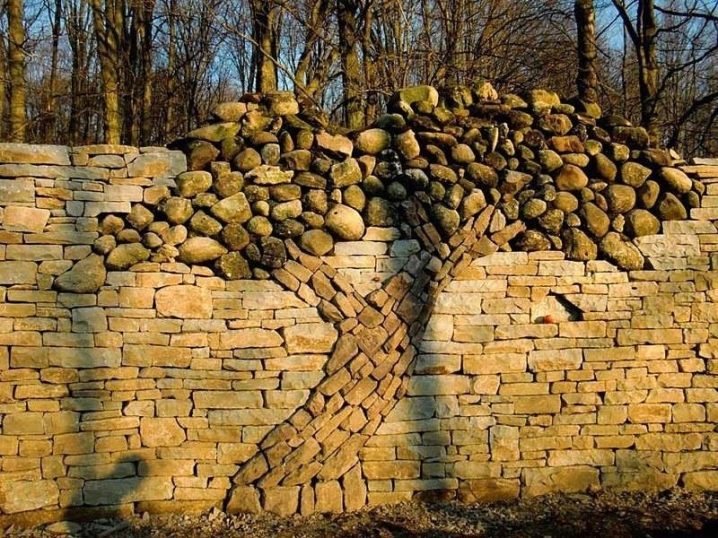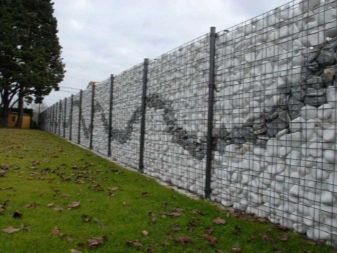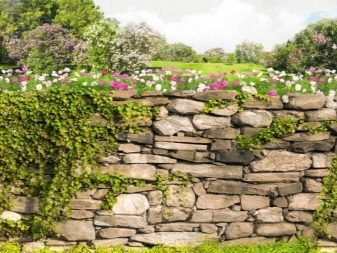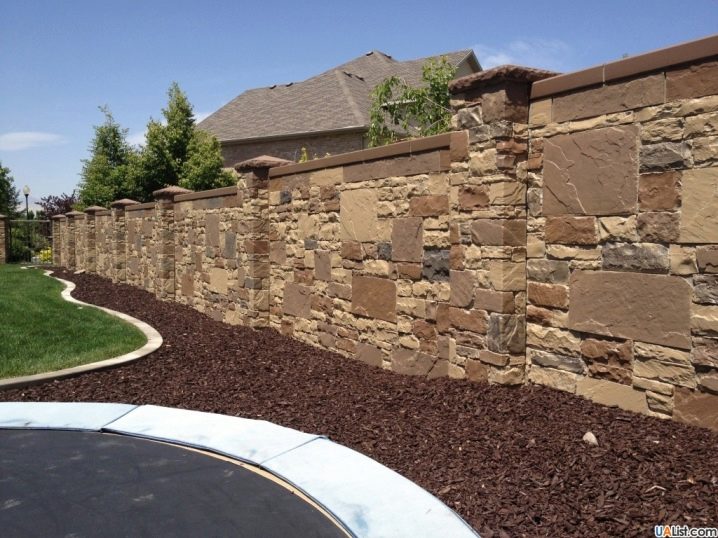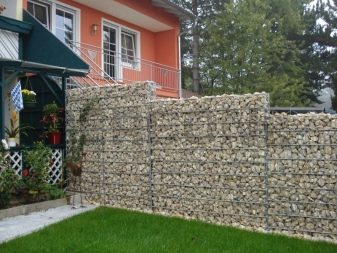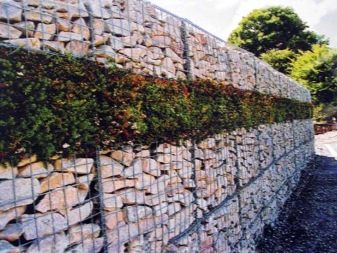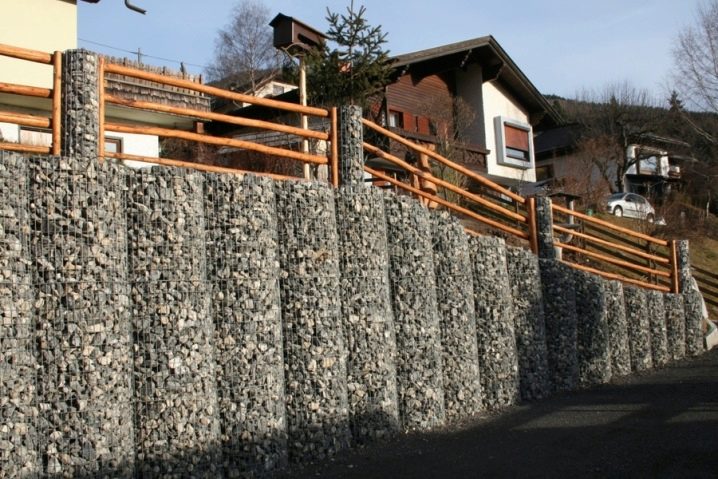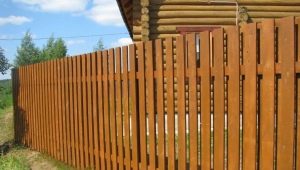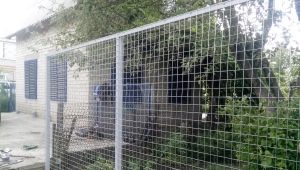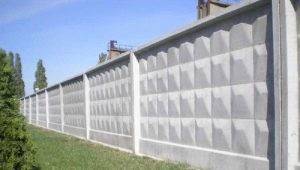Stone fences: reliable protection for private homes
From ancient times, stone was associated with solidity and invincibility. It is not surprising that even nowadays it is actively used to form fences, fences on plots and around houses. But it is necessary to take a thorough approach to creating such barriers, because only then can they reliably protect their personal space from intruders and at the same time demonstrate true beauty and elegance.
Pros and cons of stone fencing
Stone fence has a number of significant advantages. In particular, the laying is guaranteed to last at least 50 years, and if it is done correctly and according to all the rules, then a much longer period. The full naturalness of the material eliminates any environmental and sanitary risk by 100%. By varying the types of blocks and fractions, you can change the price within fairly wide limits.
Unlike wood, the risk of fire is zero. Any work on the construction of a fence of stone parts can be done independently.
The stone is easily included in the composition and can be used against any landscape. Compatibility with natural and synthetic materials is very high. It is important to keep in mind the weak positions: some types of stone materials are very expensive, and for the whole structure to be strong and stable, it will be necessary to lay a foundation for it. But, if you build your own fence around a private house, you can save a lot.
Material selection
In the construction of fences can be used a variety of types of stones, and one of the most common solutions is cobblestones. "Boulder stones", as they are sometimes called, are outwardly simple and at the same time strong enough.
It is not necessary to choose the traditional gray boulders - the red-brown versions are also presented on the market. As for the boot, this is also a very popular decision.
This mineral:
- extracted from the same deposits as sandstone, dolomite, limestone;
- different irregular geometric shape;
- has lengths of edges from 150 to 500 mm;
- suitable for the construction of the main part and as a veneer.
Barriers created with gravel filling the net are widely encountered. The use of heterogeneous fractions allows you to make fences of various forms, sometimes large and small varieties of rock are used simultaneously. Dolomite, mined in the mountains, has excellent protective and decorative properties at the same time.
Limestone is quite diverse, but whatever it is - marble, shell rock, and so on - it will be easy to process the stone. It is necessary to take into account the intensive absorption of water, which is prevented by treatment with special reagents.
A kind of artificial stone, suitable for the construction of fences, is the so-called "French". To make this material, use a special kind of machines. In essence, "French stone" is called the empty inside of slag blocks, which are obtained by the method of vibration pressing.
Additionally, the application of compounds that increase its resistance to moisture helps to improve the material. The appearance of fences made of artificial stone is no worse than the options made from natural materials.
Moreover, there are a number of advantages:
- the highest period of service, unattainable for natural blocks;
- low price;
- the ability to create any texture of choice (torn, punctured, completely smooth or rough when touched);
- easing the load on the base;
- strictly standardized sizes.
An important characteristic is always the appearance of a particular material. For example, fences based on wild rubble stone are white, yellow, black and blue. In addition to pure colors, their shades can be used. By the way the bottle looks, it has different names - “plitnyak”, “bed cover” and so on.
Bulk fences began to apply relatively recently, but they have already gained considerable popularity among developers.
Pergons, for example, are able to decorate the landscape and country house. Varying at the same time filling the structure, it is possible to create an unusually good look. If the construction is done correctly, then it will work as much time as a traditional brick barrier.
The shell looks very nice, but we must remember that wet cold weather will quickly destroy it, so this solution is not suitable for lowlands.
More reliably filling the bulk structure with natural Dagestan stone. It can be represented by different breeds and is superior in quality to natural raw materials from most lowland quarries. If it is necessary to save money as much as possible, then you need to use gabion, filling it with construction or repair waste, broken bricks and all sorts of similar materials.
Taking a cobblestone somewhere in the field, you can significantly complicate further work. Much easier and easier to immediately go to specialty stores. If there are no special preferences for the appearance of the fence and its elements, you need to take stones with one flat face. Complicated structures are created on the basis of pebbles and gravel, as the easiest to form materials. They should also use, working on the corners of the future fence.
With the help of a rubble stone, it is possible to form elegantly looking long spans, each of which seems unique and inimitable.
How to make?
Design
Make the right decision and build a long-serving fence can not, if you do not take into account Three key factors:
- groundwater (how abundant they are, how high they are, and how great the chemical aggressiveness is);
- properties of the surrounding area;
- soil quality and predicted atmospheric effects.
Next, you need to pay attention to how great the skills in the construction industry are, or how much money a person is willing to give to performers for creating fences. For example, the combination of stone with wood allows you to make the appearance of the territory more harmonious. But to achieve the desired result is not easy, but without special training it is completely impossible. A stone in a grid or gabion on the basis of thick-gauge steel wire is a simpler technology, while guaranteeing the highest durability.
Most often combine natural stone and brick, which is used in the main part of the structure, and stone blocks go to the base and in the intervals from one pillar to another. If gabions are used, then framing with green plants will help make them more attractive. But such a decision should be immediately taken into account in the project in order to prevent serious mistakes.
In the drawings, mark the locations of all the pillars, the anchorage points of the gates and wickets, the levels of each side of the site.
Construction
The first step in the construction of a stone fence is always the pouring of the foundation. There are two competing technologies: with the use of concrete or with the laying of rubble stones on ordinary cement mortar. The second option is attractive for its simplicity, but its reliability is a big question.
In any case, the prerequisite for success is a completely dried base. Until it hardened, it is impossible to continue construction.
In order not to be mistaken, the outer corners of the supposed fence are marked with stakes and pull the cord. The foundation with reinforcing elements, which is 0.15-0.2 m wider than the above-ground structure, will help avoid land subsidence and skewed fencing.
After that, you must perform the following steps:
- waterproofing;
- laying stone;
- treatment of the resulting seams.
Protection against moisture is created in two stages. Even before pouring concrete, it will be necessary to block the walls, excavations and its bottom with roofing paper. When the filled layer dries, put the ruberoid again, but on the finished site. This will avoid the penetration of groundwater inside the fence and its gradual destruction.
Laying the stone is quite difficult, the main difficulty is usually the exact selection of blocks in size and configuration. Cobblestones can even be cut according to the required parameters, but this is a very laborious and not so fast work. Sandstone and pre-polished cobblestones can be laid in the same way as a simple brick. Rubble elements on technology laying closer to the formwork.
Regardless of the specific material, they first form pillars, each of which is made wider than a span.
It is most convenient to tie supports with the edges of the spans by the method of dressing, especially when angular stones are chosen for laying. The dressing is formed from the first two stones on both sides, then the 1st and 2nd support row, the initial row of span are created.
It is recommended to start creating masonry with stones as much as possible the correct shape and the same size. Other specimens are suitable when you need to lay the walls, and the smallest fragments and fragments are used to fill voids and crevices.
It is important to note that wild stone before work should be washed in running water. Those areas that will come into contact with concrete, it is advisable to miss with latex glue.To keep it on the initially smooth surface, it is even recommended to cover it with notches. It is the best of all to make binding solution of cement, the clean washed sand and PVA glue in a proportion 1: 3: 0,25.
In most cases, stone fences are laid by the method of laying masonry when using rectangular or almost rectangular elements. By selecting a more carefully processed stone, you can make the fence stronger, and if you enter relatively coarse blocks, you will be able to make the surface more visually attractive.
Horizontal installation method involves the use of flat stones; similar elements can be used in vertical placement. In the rubble masonry, rounded stones are used, which are placed close to the formwork before pouring the mortar.
The finish of the seams is very important because if it is not carried out or poorly done, the appearance of the fence will be worse. An excessively deep suture even makes sense to close with additional portions of the solution. Strongly polluted stone is cleaned with metal brushes.
It is necessary to take into account that there are building stones that require removal of an uncured mortar that has entered areas where it is not needed.When there is a need to adjust the design of the fence, for example, to eliminate the defects that have appeared, it is advisable to use crushed granite.
The first step in finishing is the application of a facade primer, which will need to be covered with glue or cement with plasticizer additives. Only on the surface prepared in this way can granite be fixed. If its appearance does not like, you should use other flat materials and structural plaster.
As for the necessary building materials, the cement category M300 or M400 is used as a link. If rubble is used, it should be of medium fractions. The best choice for the construction of the fence is also considered to be sand fractions from 0.15 to 5 mm, reinforcement (rods) with a diameter of 0.8-1.2 cm. Experts recommend making formwork from a semi-edged board, and take a thick steel pipe 35-40 dm long.
For work will be useful:
- wood stakes;
- construction cord (6 skeins usually enough);
- saws for wood and metal;
- roulette;
- shovels (at least, digging and bucket);
- plummet;
- tamping devices;
- spirit level;
- trowel;
- hard wire brush;
- set of large capacity buckets.
As the final decor is widely used:
- clay tiles;
- elegant lanterns;
- forged items;
- lattice.
Calculations
Even before the start of work and the procurement of materials, you need to make competent calculations. It is necessary to clarify the boundaries of land tenure and the area reserved for the shadow cast. Only then can we figure out what exactly should be the height of the fence, and where it should be put. On the basis of calculations, an estimate is made, building materials and tools are purchased (if necessary).
Almost always enough height 200-220 cm, and the number of future supports is calculated from the assumption that the spans are 250-320 cm.
How to make a fence of wild stone, see the following video.
Beautiful examples
Technical aspects of the construction of stone fences are very important. But no less relevant is their “appearance”, because it is for her that your aesthetic taste and ability to decorate the space will be judged.
A semi-antique fence made out of relief (protruding) stones of a pinkish hue, rectangular clusters of which are framed with rich yellow brick, looks very elegant and fresh.A good alternative to it is a cluttered-looking clutch, the harmony between the elements of which is supported by the choice of a limited number of colors. The photo shows how well such a fence is perceived, reflected in the pond and adjacent to a low stone border of the same color.
Decorating a fence for a country house using a combination of gray and pink stone can also be a nice idea. Rough-shaped blocks fastened with gray cement mortar are attractive if you choose the right combination and use the pillars that rise above the main canvas.
Having abandoned strict classicism, one can significantly expand the range of permissible design moves. It will look very original, for example, stylized on the wall "tree", assembled from stones, somewhat different in color and shape from the rest of the material.
In order to make the composition even more advantageous, it is worthwhile to put them in a relief manner with the drawing of the picture beyond the frontal plane of the fence.
Here is another non-standard solution: a wavy line of dark color, fired over the entire surface of the white stone massif.Another way to shade the beauty of natural material is its landscaping: some parts are covered with greens more, others leave partially or completely open. It is important that the plants are low-key, then the pristine beauty of a wild stone will reveal as fully as possible.
A very large difference in the size of stone blocks can be turned from a minus into a plus, if the composition is properly thought out. The use of stone of different colors helps to emphasize the difference and make the appearance of the fence more interesting. You can even enter into one wall dark and light blocks - this will only improve the design quality of the barrier.
Mesh gabion, filled with a relatively small (slightly smaller than the average fraction) stone, many people seem to be something uninteresting and outwardly faded. But you can use the original move: make the barrier not the same in height, but in the form of a “ladder”: each next section is slightly lower than the previous one. Not the worst solution should be recognized and the "green gap", when the upper third of the gabion is separated from its lower part by a strip, through which branches and leaves of bushes go outside.
Here we have another unique design project: an array of small stones assembled in vertically set “rolls”, closely adjacent to each other.
It is easy to see that the construction of a stone fence is not particularly difficult. And its appearance is extremely diverse. So, it is too early to dismiss this old type of barriers, despite the appearance of modern materials.

